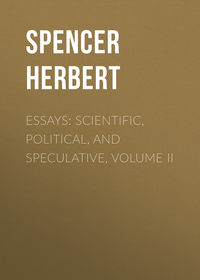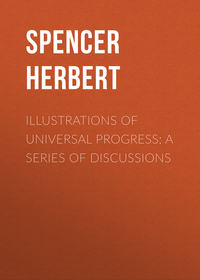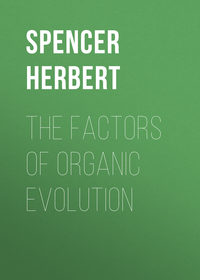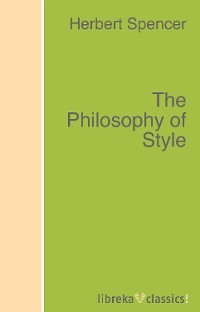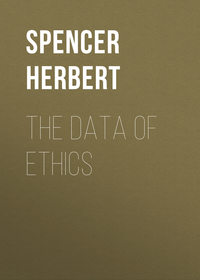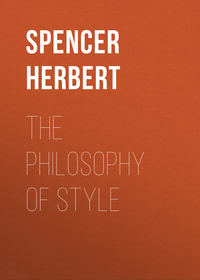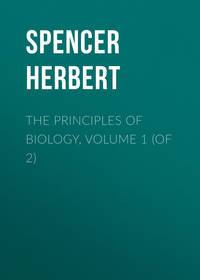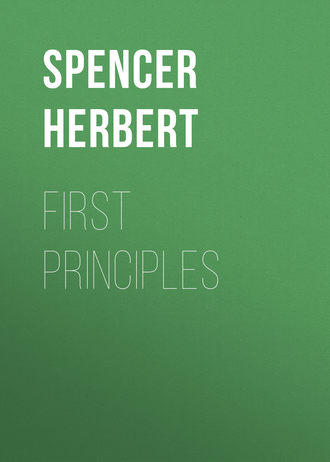 полная версия
полная версияFirst Principles
As the conditionally limited (which we may briefly call the conditioned) is thus the only possible object of knowledge and of positive thought – thought necessarily supposes conditions. To think is to condition; and conditional limitation is the fundamental law of the possibility of thought. For, as the greyhound cannot outstrip his shadow, nor (by a more appropriate simile) the eagle outsoar the atmosphere in which he floats, and by which alone he may be supported; so the mind cannot transcend that sphere of limitation, within and through which exclusively the possibility of thought is realized. Thought is only of the conditioned; because, as we have said, to think is simply to condition. The absolute is conceived merely by a negation of conceivability; and all that we know, is only known as
– ‘won from the void and formless infinite.’How, indeed, it could ever be doubted that thought is only of the conditioned, may well be deemed a matter of the profoundest admiration. Thought cannot transcend consciousness; consciousness is only possible under the antithesis of a subject and object of thought, known only in correlation, and mutually limiting each other; while, independently of this, all that we know either of subject or object, either of mind or matter, is only a knowledge in each of the particular, of the plural, of the different, of the modified, of the phenomenal. We admit that the consequence of this doctrine is, – that philosophy, if viewed as more than a science of the conditioned, is impossible. Departing from the particular, we admit, that we can never, in our highest generalizations, rise above the finite; that our knowledge, whether of mind or matter, can be nothing more than a knowledge of the relative manifestations of an existence, which in itself it is our highest wisdom to recognize as beyond the reach of philosophy, – in the language of St Austin, – ‘cognoscendo ignorari, et ignorando cognosci.’
“The conditioned is the mean between two extremes, – two inconditionates, exclusive of each other, neither of which can be conceived as possible, but of which, on the principles of contradiction and excluded middle, one must be admitted as necessary. On this opinion, therefore, reason is shown to be weak, but not deceitful. The mind is not represented as conceiving two propositions subversive of each other, as equally possible; but only, as unable to understand as possible, either of two extremes; one of which, however, on the ground of their mutual repugnance, it is compelled to recognize as true. We are thus taught the salutary lesson, that the capacity of thought is not to be constituted into the measure of existence; and are warned from recognizing the domain of our knowledge as necessarily co-extensive with the horizon of our faith. And by a wonderful revelation, we are thus, in the very consciousness of our inability to conceive aught above the relative and finite, inspired with a belief in the existence of something unconditioned beyond the sphere of all comprehensible reality.”
Clear and conclusive as this statement of the case appears when carefully studied, it is expressed in so abstract a manner as to be not very intelligible to the general reader. A more popular presentation of it, with illustrative applications, as given by Mr Mansel in his “Limits of Religious Thought,” will make it more fully understood. The following extracts, which I take the liberty of making from his pages, will suffice.
“The very conception of consciousness, in whatever mode it may be manifested, necessarily implies distinction between one object and another. To be conscious, we must be conscious of something; and that something can only be known, as that which it is, by being distinguished from that which it is not. But distinction is necessarily limitation; for, if one object is to be distinguished from another, it must possess some form of existence which the other has not, or it must not possess some form which the other has. But it is obvious the Infinite cannot be distinguished, as such, from the Finite, by the absence of any quality which the Finite possesses; for such absence would be a limitation. Nor yet can it be distinguished by the presence of an attribute which the Finite has not; for, as no finite part can be a constituent of an infinite whole, this differential characteristic must itself be infinite; and must at the same time have nothing in common with the finite. We are thus thrown back upon our former impossibility; for this second infinite will be distinguished from the finite by the absence of qualities which the latter possesses. A consciousness of the Infinite as such thus necessarily involves a self-contradiction; for it implies the recognition, by limitation and difference, of that which can only be given as unlimited and indifferent. * * *
“This contradiction, which is utterly inexplicable on the supposition that the infinite is a positive object of human thought, is at once accounted for, when it is regarded as the mere negation of thought. If all thought is limitation; – if whatever we conceive is, by the very act of conception, regarded as finite, —the infinite, from a human point of view, is merely a name for the absence of those conditions under which thought is possible. To speak of a Conception of the Infinite is, therefore, at once to affirm those conditions and to deny them. The contradiction, which we discover in such a conception, is only that which we have ourselves placed there, by tacitly assuming the conceivability of the inconceivable. The condition of consciousness is distinction; and condition of distinction is limitation. We can have no consciousness of Being in general which is not some Being in particular: a thing, in consciousness, is one thing out of many. In assuming the possibility of an infinite object of consciousness, I assume, therefore, that it is at the same time limited and unlimited; – actually something, without which it could not be an object of consciousness, and actually nothing, without which it could not be infinite. * * *
“A second characteristic of Consciousness is, that it is only possible in the form of a relation. There must be a Subject, or person conscious, and an Object, or thing of which he is conscious. There can be no consciousness without the union of these two factors; and, in that union, each exists only as it is related to the other. The subject is a subject, only in so far as it is conscious of an object: the object is an object, only in so far as it is apprehended by a subject: and the destruction of either is the destruction of consciousness itself. It is thus manifest that a consciousness of the Absolute is equally self-contradictory with that of the Infinite. To be conscious of the Absolute as such, we must know that an object, which is given in relation to our consciousness, is identical with one which exists in its own nature, out of all relation to consciousness. But to know this identity, we must be able to compare the two together; and such a comparison is itself a contradiction. We are in fact required to compare that of which we are conscious with that of which we are not conscious; the comparison itself being an act of consciousness, and only possible through the consciousness of both its objects. It is thus manifest that, even if we could be conscious of the absolute, we could not possibly know that it is the absolute: and, as we can be conscious of an object as such, only by knowing it to be what it is, this is equivalent to an admission that we cannot be conscious of the absolute at all. As an object of consciousness, every thing is necessarily relative; and what a thing may be out of consciousness, no mode of consciousness can tell us.
“This contradiction, again, admits of the same explanation as the former. Our whole notion of existence is necessarily relative; for it is existence as conceived by us. But Existence, as we conceive it, is but a name for the several ways in which objects are presented to our consciousness, – a general term, embracing a variety of relations. The Absolute, on the other hand, is a term expressing no object of thought, but only a denial of the relation by which thought is constituted. To assume absolute existence as an object of thought, is thus to suppose a relation existing when the related terms exist no longer. An object of thought exists, as such, in and through its relation to a thinker; while the Absolute, as such, is independent of all relation. The Conception of the Absolute thus implies at the same time the presence and absence of the relation by which thought is constituted; and our various endeavours to represent it are only so many modified forms of the contradiction involved in our original assumption. Here, too, the contradiction is one which we ourselves have made. It does not imply that the Absolute cannot exist; but it implies, most certainly, that we cannot conceive it as existing.”
Here let me point out how the same general inference may be evolved from another fundamental condition of thought, omitted by Sir W. Hamilton, and not supplied by Mr Mansel; – a condition which, under its obverse aspect, we have already contemplated in the last section. Every complete act of consciousness, besides distinction and relation, also implies likeness. Before it can become an idea, or constitute a piece of knowledge, a mental state must not only be known as separate in kind from certain foregoing states to which it is known as related by succession; but it must further be known as of the same kind with certain other foregoing states. That organization of changes which constitutes thinking, involves continuous integration as well as continuous differentiation. Were each new affection of the mind perceived simply as an affection in some way contrasted with the preceding ones – were there but a chain of impressions, each of which as it arose was merely distinguished from its predecessors; consciousness would be an utter chaos. To produce that orderly consciousness which we call intelligence, there requires the assimilation of each impression to others, that occurred earlier in the series. Both the successive mental states, and the successive relations which they bear to each other, must be classified; and classification involves not only a parting of the unlike, but also a binding together of the like. In brief, a true cognition is possible only through an accompanying recognition. Should it be objected that if so, there cannot be a first cognition, and hence there can be no cognition; the reply is, that cognition proper arises gradually – that during the first stage of incipient intelligence, before the feelings produced by intercourse with the outer world have been put into order, there are no cognitions, strictly so called; and that, as every infant shows us, these slowly emerge out of the confusion of unfolding consciousness as fast as the experiences are arranged into groups – as fast as the most frequently repeated sensations, and their relations to each other, become familiar enough to admit of their recognition as such or such, whenever they recur. Should it be further objected that if cognition pre-supposes recognition, there can be, no cognition, even by an adult, of an object never before seen; there is still the sufficient answer that in so far as it is not assimilated to previously-seen objects, it is not known, and that it is known in so far as it is assimilated to them. Of this paradox the interpretation is, that an object is classifiable in various ways, with various degrees of completeness. An animal hitherto unknown (mark the word), though not referable to any established species or genus, is yet recognized as belonging to one of the larger divisions – mammals, birds, reptiles, or fishes; or should it be so anomalous that its alliance with any of these is not determinable, it may yet be classed as vertebrate or invertebrate; or if it be one of those organisms of which it is doubtful whether the animal or vegetal characteristics predominate, it is still known as a living body; even should it be questioned whether it is organic, it remains beyond question that it is a material object, and it is cognized by being recognized as such. Whence it is manifest that a thing is perfectly known only when it is in all respects like certain things previously observed; that in proportion to the number of respects in which it is unlike them, is the extent to which it is unknown; and that hence when it has absolutely no attribute in common with anything else, it must be absolutely beyond the bounds of knowledge.
Observe the corollary which here concerns us. A cognition of the Real, as distinguished from the Phenomenal, must, if it exists, conform to this law of cognition in general. The First Cause, the Infinite, the Absolute, to be known at all, must be classed. To be positively thought of, it must be thought of as such or such – as of this or that kind. Can it be like in kind to anything of which we have sensible experience? Obviously not. Between the creating and the created, there must be a distinction transcending any of the distinctions existing between different divisions of the created. That which is uncaused cannot be assimilated to that which is caused: the two being, in the very naming, antithetically opposed. The Infinite cannot be grouped along with something that is finite; since, in being so grouped, it must be regarded as not-infinite. It is impossible to put the Absolute in the same category with anything relative, so long as the Absolute is defined as that of which no necessary relation can be predicated. Is it then that the Actual, though unthinkable by classification with the Apparent, is thinkable by classification with itself? This supposition is equally absurd with the other. It implies the plurality of the First Cause, the Infinite, the Absolute; and this implication is self-contradictory. There cannot be more than one First Cause; seeing that the existence of more than one would involve the existence of something necessitating more than one, which something would be the true First Cause. How self-destructive is the assumption of two or more Infinites, is manifest on remembering that such Infinites, by limiting each other, would become finite. And similarly, an Absolute which existed not alone but along with other Absolutes, would no longer be an absolute but a relative. The Unconditioned therefore, as class-able neither with any form of the conditioned nor with any other Unconditioned, cannot be classed at all. And to admit that it cannot be known as of such or such kind, is to admit that it is unknowable.
Thus, from the very nature of thought, the relativity of our knowledge is inferable in three several ways. As we find by analyzing it, and as we see it objectively displayed in every proposition, a thought involves relation, difference, likeness. Whatever does not present each of these does not admit of cognition. And hence we may say that the Unconditioned, as presenting none of them, is trebly unthinkable.
§ 25. From yet another point of view we may discern the same great truth. If, instead of examining our intellectual powers directly as exhibited in the act of thought, or indirectly as exhibited in thought when expressed by words, we look at the connexion between the mind and the world, a like conclusion is forced upon us. In the very definition of Life, when reduced to its most abstract shape, this ultimate implication becomes visible.
All vital actions, considered not separately but in their ensemble, have for their final purpose the balancing of certain outer processes by certain inner processes. There are unceasing external forces tending to bring the matter of which organic bodies consist, into that state of stable equilibrium displayed by inorganic bodies; there are internal forces by which this tendency is constantly antagonized; and the perpetual changes which constitute Life, may be regarded as incidental to the maintenance of the antagonism. To preserve the erect posture, for instance, we see that certain weights have to be neutralized by certain strains: each limb or other organ, gravitating to the Earth and pulling down the parts to which it is attached, has to be preserved in position by the tension of sundry muscles; or in other words, the group of forces which would if allowed bring the body to the ground, has to be counterbalanced by another group of forces. Again, to keep up the temperature at a particular point, the external process of radiation and absorption of heat by the surrounding medium, must be met by a corresponding internal process of chemical combination, whereby more heat may be evolved; to which add, that if from atmospheric changes the loss becomes greater or less, the production must become greater or less. And similarly throughout the organic actions in general.
When we contemplate the lower kinds of life, we see that the correspondences thus maintained are direct and simple; as in a plant, the vitality of which mainly consists in osmotic and chemical actions responding to the co-existence of light, heat, water, and carbonic acid around it. But in animals, and especially in the higher orders of them, the correspondences become extremely complex. Materials for growth and repair not being, like those which plants require, everywhere present, but being widely dispersed and under special forms, have to be found, to be secured, and to be reduced to a fit state for assimilation. Hence the need for locomotion; hence the need for the senses; hence the need for prehensile and destructive appliances; hence the need for an elaborate digestive apparatus. Observe, however, that these successive complications are essentially nothing but aids to the maintenance of the organic balance in its integrity, in opposition to those physical, chemical, and other agencies which tend to overturn it. And observe, moreover, that while these successive complications subserve this fundamental adaptation of inner to outer actions, they are themselves nothing else but further adaptations of inner to outer actions. For what are those movements by which a predatory creature pursues its prey, or by which its prey seeks to escape, but certain changes in the organism fitted to meet certain changes in its environment? What is that compound operation which constitutes the perception of a piece of food, but a particular correlation of nervous modifications, answering to a particular correlation of physical properties? What is that process by which food when swallowed is reduced to a fit form for assimilation, but a set of mechanical and chemical actions responding to the mechanical and chemical actions which distinguish the food? Whence it becomes manifest, that while Life in its simplest form is the correspondence of certain inner physico-chemical actions with certain outer physico-chemical actions, each advance to a higher form of Life consists in a better preservation of this primary correspondence by the establishment of other correspondences.
Divesting this conception of all superfluities and reducing it to its most abstract shape, we see that Life is definable as the continuous adjustment of internal relations to external relations. And when we so define it, we discover that the physical and the psychial life are equally comprehended by the definition. We perceive that this which we call Intelligence, shows itself when the external relations to which the internal ones are adjusted, begin to be numerous, complex, and remote in time or space; that every advance in Intelligence essentially consists in the establishment of more varied, more complete, and more involved adjustments; and that even the highest achievements of science are resolvable into mental relations of co-existence and sequence, so co-ordinated as exactly to tally with certain relations of co-existence and sequence that occur externally. A caterpillar, wandering at random and at length finding its way on to a plant having a certain odour, begins to eat – has inside of it an organic relation between a particular impression and a particular set of actions, answering to the relation outside of it, between scent and nutriment. The sparrow, guided by the more complex correlation of impressions which the colour, form, and movements of the caterpillar gave it; and guided also by other correlations which measure the position and distance of the caterpillar; adjusts certain correlated muscular movements in such way as to seize the caterpillar. Through a much greater distance in space is the hawk, hovering above, affected by the relations of shape and motion which the sparrow presents; and the much more complicated and prolonged series of related nervous and muscular changes, gone through in correspondence with the sparrow’s changing relations of position, finally succeed when they are precisely adjusted to these changing relations. In the fowler, experience has established a relation between the appearance and flight of a hawk and the destruction of other birds, including game; there is also in him an established relation between those visual impressions answering to a certain distance in space, and the range of his gun; and he has learned, too, by frequent observation, what relations of position the sights must bear to a point somewhat in advance of the flying bird, before he can fire with success. Similarly if we go back to the manufacture of the gun. By relations of co-existence between colour, density, and place in the earth, a particular mineral is known as one which yields iron; and the obtainment of iron from it, results when certain correlated acts of ours, are adjusted to certain correlated affinities displayed by ironstone, coal, and lime, at a high temperature. If we descend yet a step further, and ask a chemist to explain the explosion of gunpowder, or apply to a mathematician for a theory of projectiles, we still find that special or general relations of co-existence and sequence between properties, motions, spaces &c., are all they can teach us. And lastly, let it be noted that what we call truth, guiding us to successful action and the consequent maintenance of life, is simply the accurate correspondence of subjective to objective relations; while error, leading to failure and therefore towards death, is the absence of such accurate correspondence.
If, then, Life in all its manifestations, inclusive of Intelligence in its highest forms, consists in the continuous adjustment of internal relations to external relations, the necessarily relative character of our knowledge becomes obvious. The simplest cognition being the establishment of some connexion between subjective states, answering to some connexion between objective agencies; and each successively more complex cognition being the establishment of some more involved connexion of such states, answering to some more involved connexion of such agencies; it is clear that the process, no matter how far it be carried, can never bring within the reach of Intelligence, either the states themselves or the agencies themselves. Ascertaining which things occur along with which, and what things follow what, supposing it to be pursued exhaustively, must still leave us with co-existences and sequences only. If every act of knowing is the formation of a relation in consciousness parallel to a relation in the environment, then the relativity of knowledge is self-evident – becomes indeed a truism. Thinking being relationing, no thought can ever express more than relations.
And here let us not omit to mark how that to which our intelligence is confined, is that with which alone our intelligence is concerned. The knowledge within our reach, is the only knowledge that can be of service to us. This maintenance of a correspondence between internal actions and external actions, which both constitutes our life at each moment and is the means whereby life is continued through subsequent moments, merely requires that the agencies acting upon us shall be known in their co-existences and sequences, and not that they shall be known in themselves. If x and y are two uniformly connected properties in some outer object, while a and b are the effects they produce in our consciousness; and if while the property x produces in us the indifferent mental state a, the property y produces in us the painful mental state b (answering to a physical injury); then, all that is requisite for our guidance, is, that x being the uniform accompaniment of y externally, a shall be the uniform accompaniment of b internally; so that when, by the presence of x, a is produced in consciousness, b, or rather the idea of b, shall follow it, and excite the motions by which the effect of y may be escaped. The sole need is that a and b and the relation between them, shall always answer to x and y and the relation between them. It matters nothing to us if a and b are like x and y or not. Could they be exactly identical with them, we should not be one whit the better off; and their total dissimilarity is no disadvantage to us.


